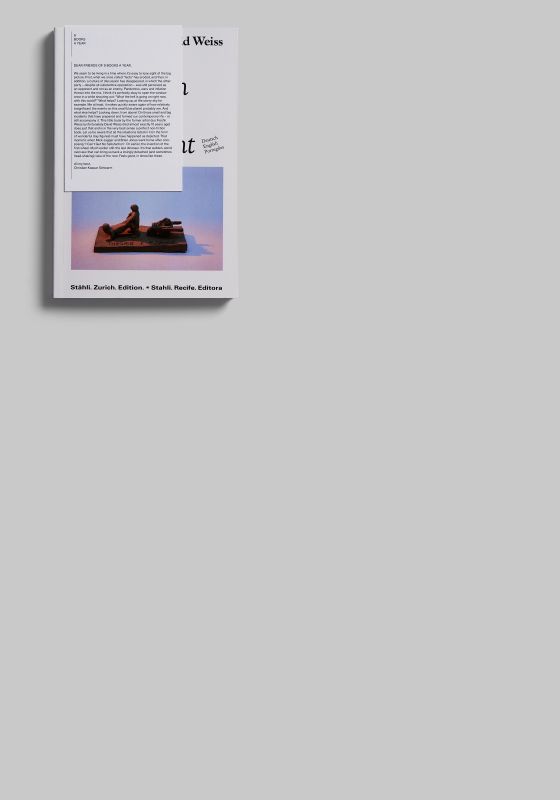MARCH 2018
Daniel Young, Christian Giroux
Berlin 2013/1983
ARCH+, 2017
DEAR FRIEND OF 8 BOOKS A YEAR,
When you live in a huge city, nature isn’t always easy to access. so last year I started something I call “endstation-Wanderung”. The idea is to simply take any underground or city railway line – without any planning beforehand – to the very last station and walk home from there, using your phone to navigate. For my first trip I took the S1 line and ended up in oranienburg, which is 33 kilometres from my apartment. It took me over 7 hours to get back that day, but without a doubt it was one of the most fascinating walks I’ve ever been on. I travelled through beautiful pinewoods and old villages without asphalted streets until I eventually set foot in berlin again. I wondered what the first house and street would look like. After another hour I began to pass places I had been before. From there on it worked like a funnel: more and more streets, junctions and buildings seemed familiar to me, before I finally stood in front of my house again. It was a unique experience, and since then I have done it several times. If you’d like to do the same in your hometown, I’d love to share 2 insights. Do it alone – it can be fun with a friend but maybe you won’t make it home on foot. And don’t choose a Sunday for such a trip, you’ll enjoy the various possibilities a regular workday will offer you on your way. The artists Daniel Young and Christian Giroux hiked Berlin too, but in a more profound and systematic way: in 2015 they crossed the whole city, zigzagging east and west to document every single building that was completed in 2013. They also photographed the closest neighbouring building that was erected one generation (approximately 30 years) earlier. Since I don’t know anybody else who has seen so much of Berlin, I asked Daniel, a Canadian, what he found the most remarkable thing. “The fences,” he said.
All my best,
Christian Kaspar Schwarm
Daniel Young, Christian Giroux
Berlin 2013/1983
ARCH+, 2017
Read InscriptionDEAR FRIEND OF 8 BOOKS A YEAR,
When you live in a huge city, nature isn’t always easy to access. so last year I started something I call “endstation-Wanderung”. The idea is to simply take any underground or city railway line – without any planning beforehand – to the very last station and walk home from there, using your phone to navigate. For my first trip I took the S1 line and ended up in oranienburg, which is 33 kilometres from my apartment. It took me over 7 hours to get back that day, but without a doubt it was one of the most fascinating walks I’ve ever been on. I travelled through beautiful pinewoods and old villages without asphalted streets until I eventually set foot in berlin again. I wondered what the first house and street would look like. After another hour I began to pass places I had been before. From there on it worked like a funnel: more and more streets, junctions and buildings seemed familiar to me, before I finally stood in front of my house again. It was a unique experience, and since then I have done it several times. If you’d like to do the same in your hometown, I’d love to share 2 insights. Do it alone – it can be fun with a friend but maybe you won’t make it home on foot. And don’t choose a Sunday for such a trip, you’ll enjoy the various possibilities a regular workday will offer you on your way. The artists Daniel Young and Christian Giroux hiked Berlin too, but in a more profound and systematic way: in 2015 they crossed the whole city, zigzagging east and west to document every single building that was completed in 2013. They also photographed the closest neighbouring building that was erected one generation (approximately 30 years) earlier. Since I don’t know anybody else who has seen so much of Berlin, I asked Daniel, a Canadian, what he found the most remarkable thing. “The fences,” he said.
All my best,
Christian Kaspar Schwarm












































